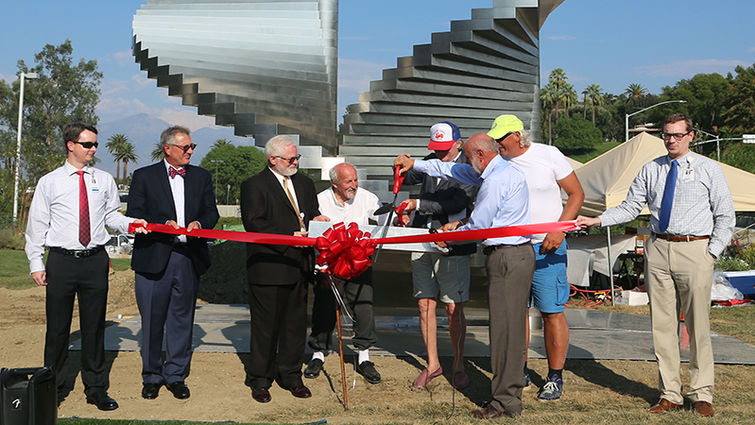
The gift was inspired by a patient who was successfully treated for prostate cancer at Loma Linda University Health.
A new sculpture in front of Centennial Complex at Loma Linda University Health captures the spiral elegance of the double helix, strands of nucleic acids also known as DNA.
The Double Helix holds special meaning for faculty, students and staff at Loma Linda University Health — a health sciences institution — as DNA controls all the workings of the body and allows the individuality among people.
A unique collaboration between a donor, artist and builder resulted in the 20-foot-tall art installation. The trio — all residents of Europe — shared their stories during a dedication event and ribbon cutting at Centennial Complex on Sept. 7.
Terry Swenson, DMin, campus chaplain at Loma Linda University, captured the significance of the sculpture in a prayer of dedication, “Lord, thank You for reminding us that science is art, and art is science.”
Jürgen Friedrich was inspired to fund the sculpture after receiving proton therapy at Loma Linda University Health, he said. Friedrich founded Esprit's European operations in 1976 and was appointed a non-executive director for the company a year later. He is now retired and lives in Switzerland.
“Loma Linda changed my life, and I wanted to find a way to show my gratitude,” Friedrich told a gathering of administrators, deans of the university’s schools and physicians and staff from the James M. Slater, MD, Proton Treatment and Research Center.
During his treatment, Friedrich learned that Seventh-day Adventists live remarkably long, healthy lives. He was inspired to give up drinking a year-and-a-half ago after discovering that Adventists advise abstaining from drinking alcohol, he said.
His experience at Loma Linda University Health also changed him spiritually. “I now pray in the morning, at lunch and in the evening,” he said.
Paffard Keatinge-Clay created The Double Helix sculpture at Friedrich’s urging. Friedrich calls Keatinge-Clay, a renowned architect and artist who trained with Frank Lloyd-Wright, “my hero.”
Jürgen Polenz of Polenz Metall Design Manufaktur in Germany oversaw the fabrication and installation of the five-ton sculpture. Its 130 pieces are held together by 1,020 screws, none of them visible. A video of the work that took place at Polenz Metall can be viewed here.
